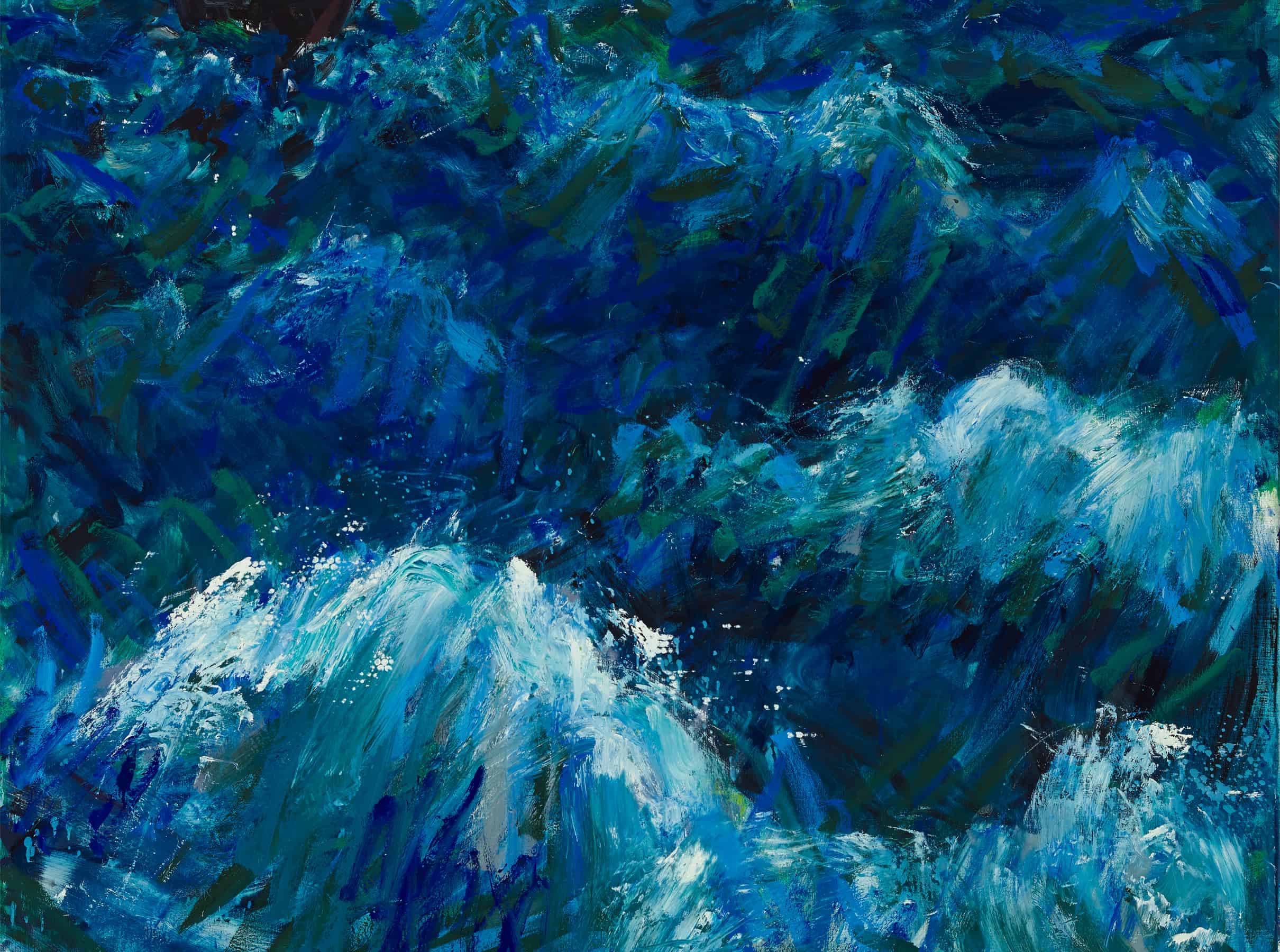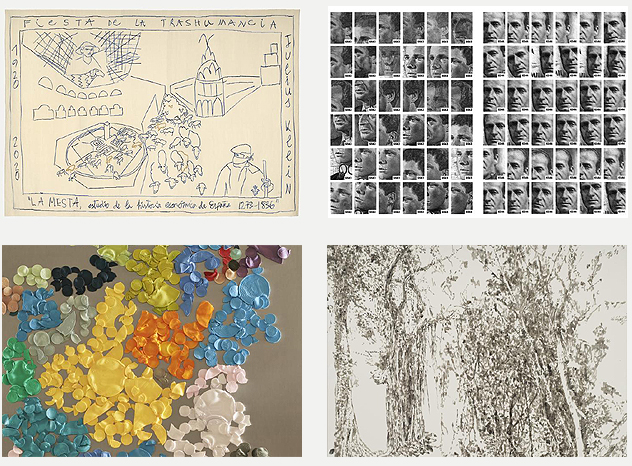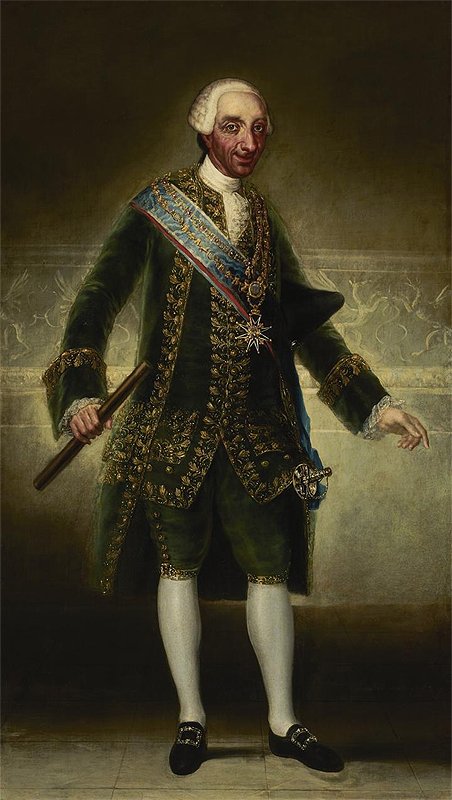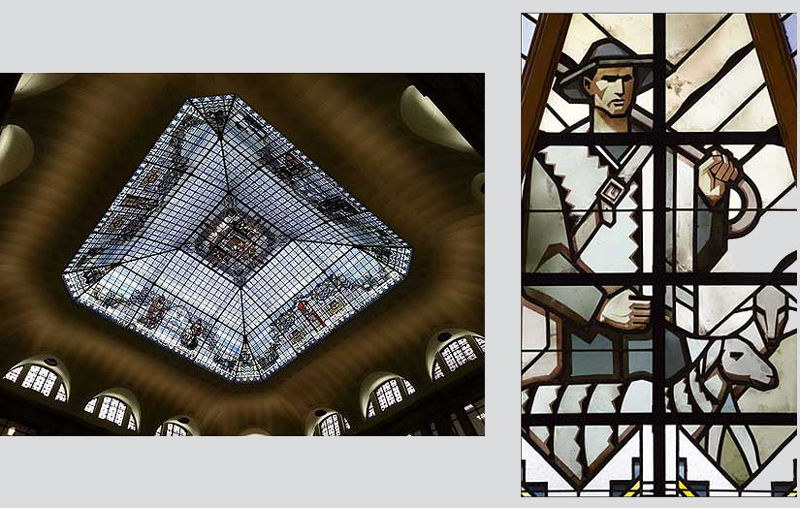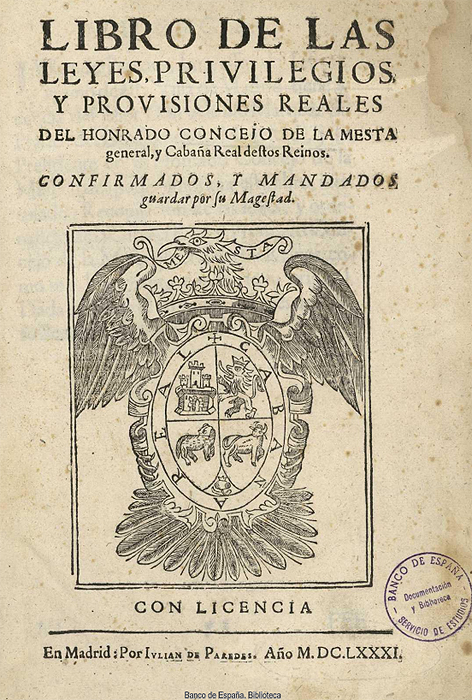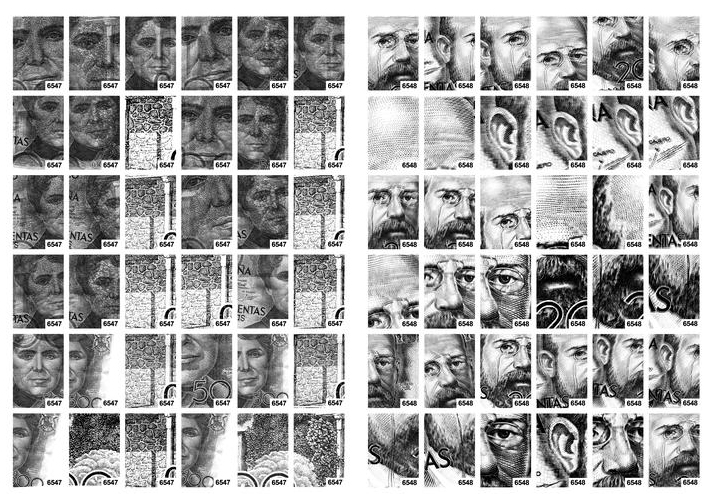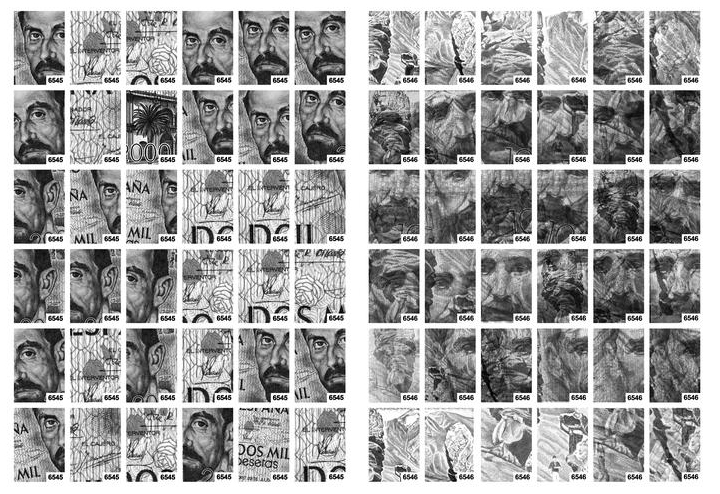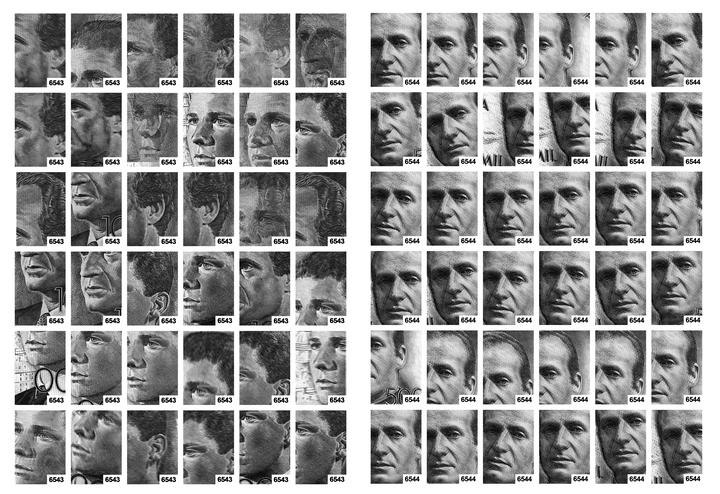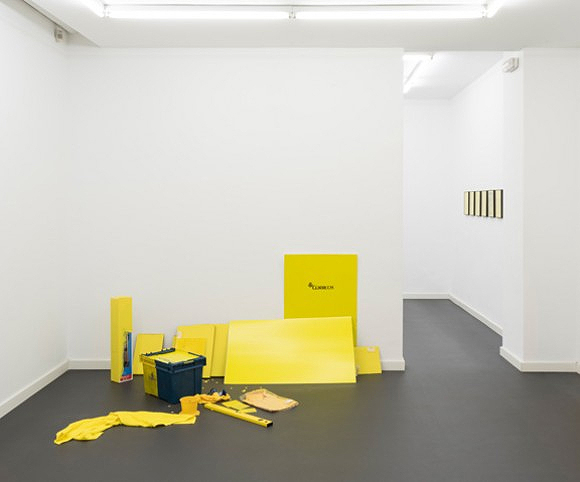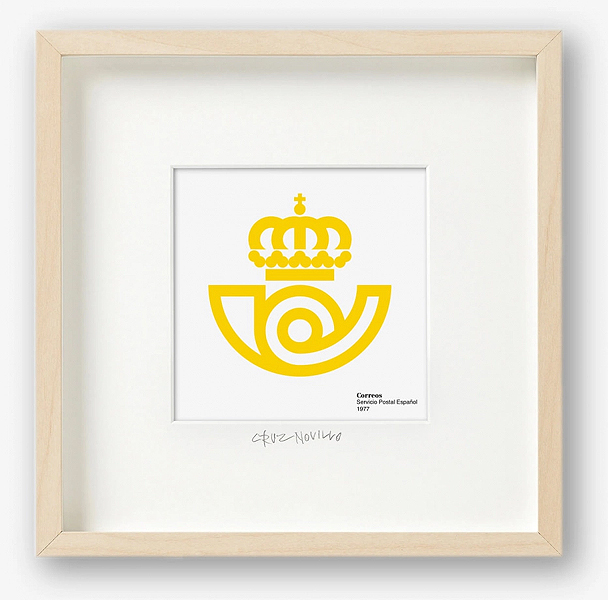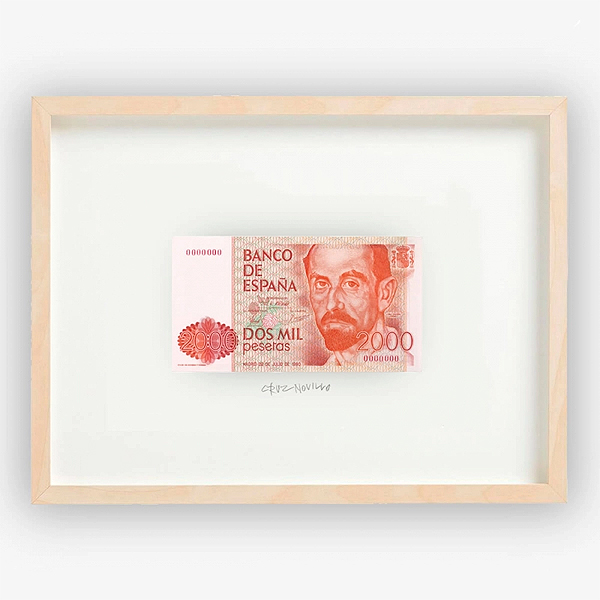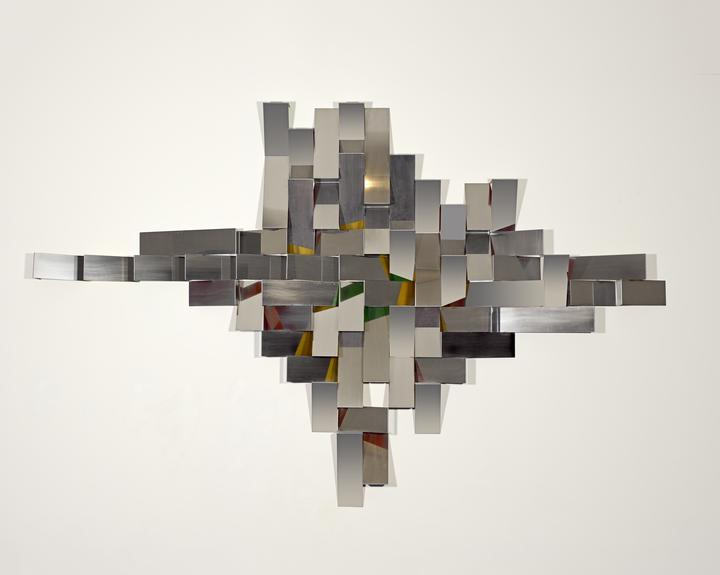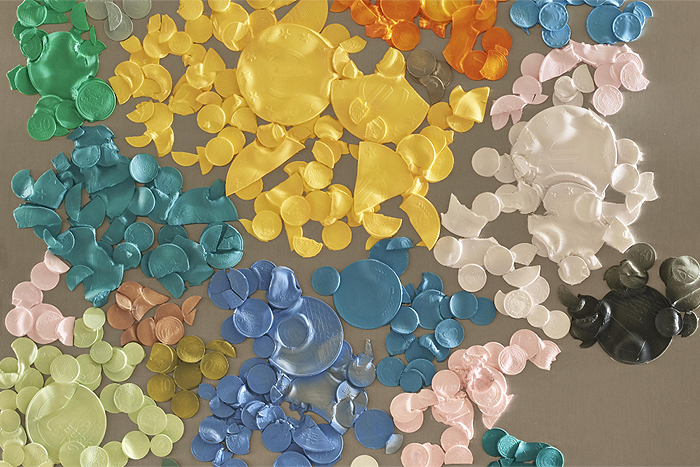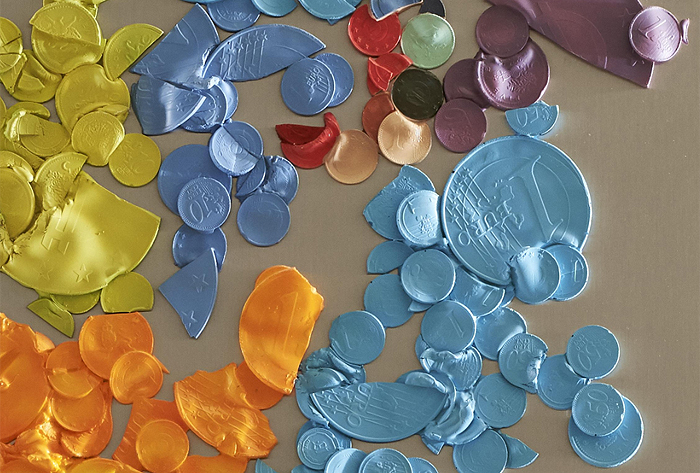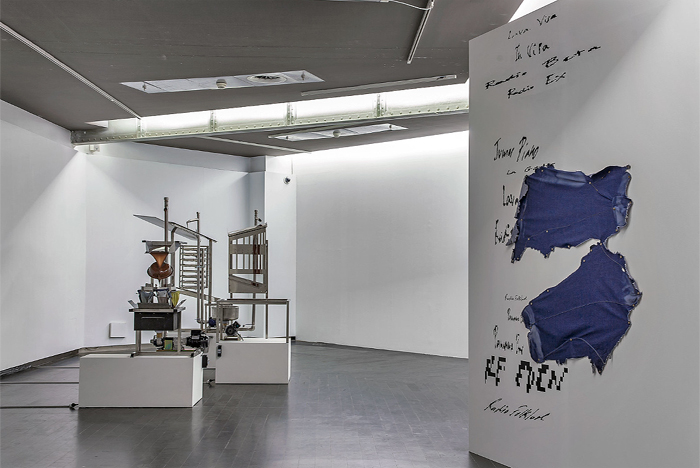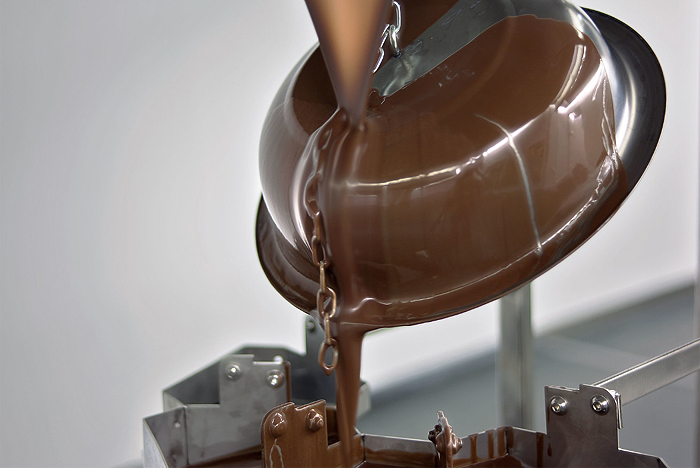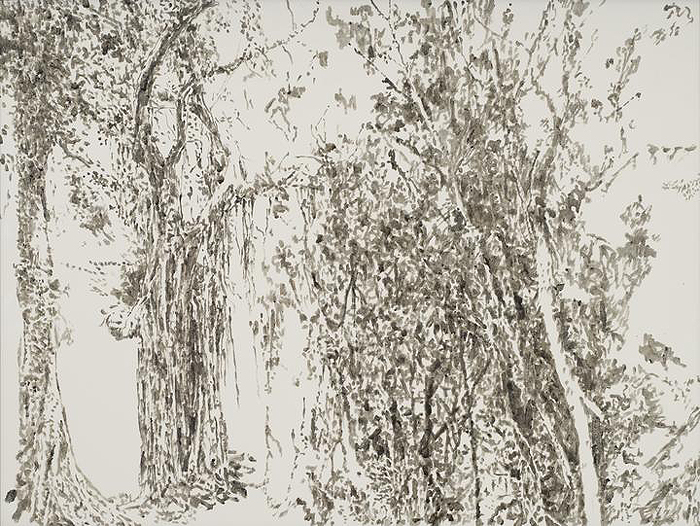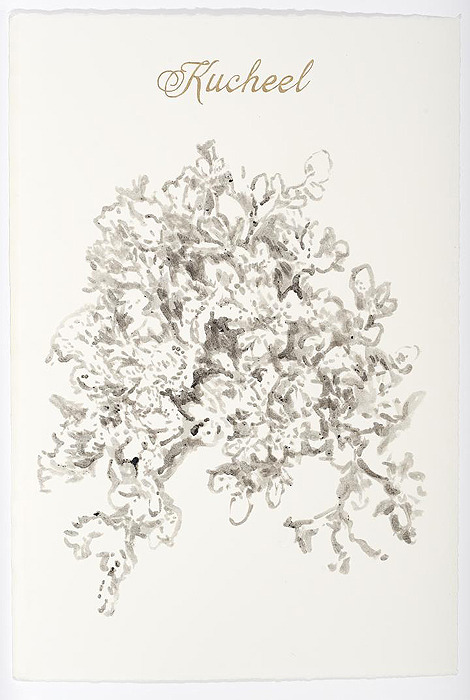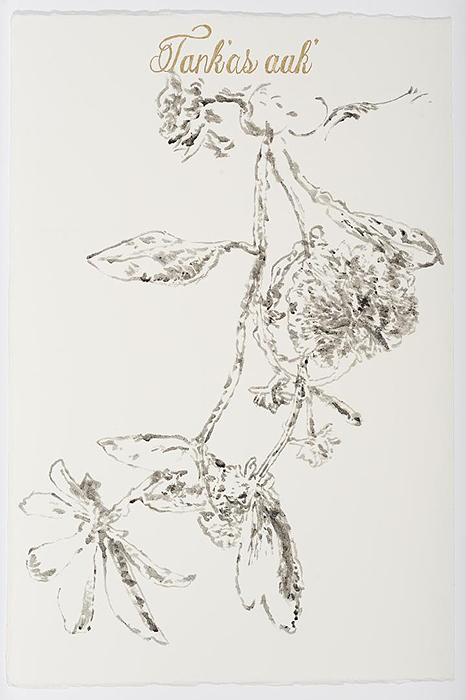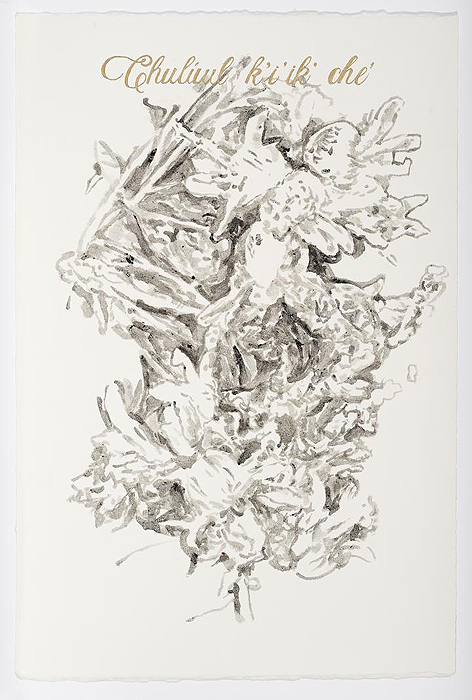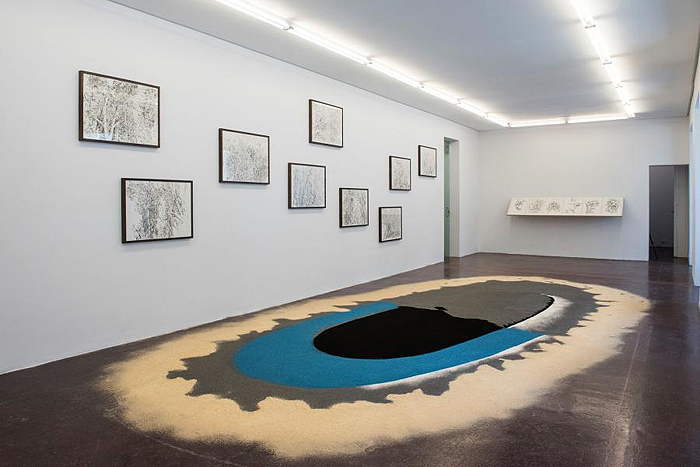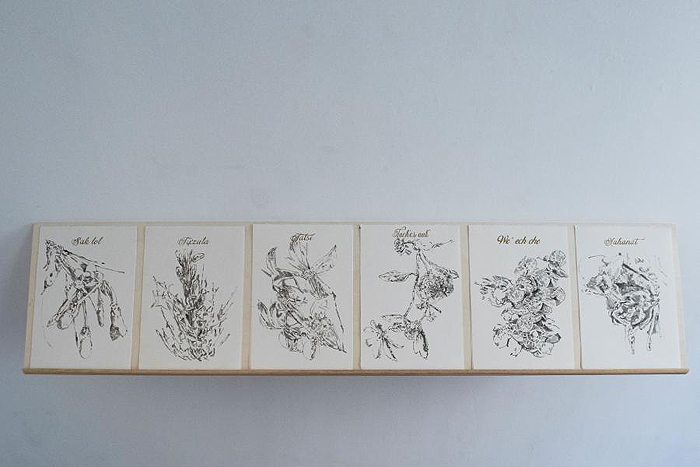From left to right:
00:22. Patricia Esquivias. Transhumance Day 2020, 2020. High-warp tapestry. Wool, silk, dye, gold and cotton. Banco de España Collection.
17:25. Francesc Ruiz. Branding, 2016 [detail]. Digital copy on photographic paper. Banco de España Collection.
40:45. Ruben Grilo. Mongrels #4, 2019 [detail]. Hand-painted, air-brushed cast polyurethane plastic elements mounted on a brushed stainless-steel tray. Banco de España Collection.
55:27. Fritzia Irizar. Untitled (Endangered Yucatan Jungle Plants), 2020-2021. Dollar bill ash ink on cotton paper. Banco de España Collection.
Fiesta de la trashumancia 2020 [Transhumance Day 2020]
Patricia Esquivias
Transhumance is still practised. However, it exists within an ideological system that strategically conceals pre-capitalist forms of economy or those that do not fit within its narratives of technological innovation. Patricia Esquivias' tapestry captures this ongoing story through the lens of a very specific scene. A shepherd is driving a flock of sheep up Madrid's Calle Alcalá to the Banco de España's trading floor.
Francisco de Goya y Lucientes. The King Charles III, c. 1786. Oil on canvas. Banco de España Collection.
Cited by Patricia Esquivias. Podcast: Min. 06:27
Art Deco stained glass window by Maumejean (Madrid) on the trading floor of the Banco de España | Detail of the window showing the figure of a shepherd.
Cited by Patricia Esquivias. Podcast: Min. 13:01
Title page of the ‘Book of Royal Laws, Privileges and Provisions of the Honourable Council of the General Mesta and Royal Flock of these Kingdoms, confirmed and ordered to be kept by His Majesty’ (Libro de Leyes, Privilegios, y Provisiones Reales del Honrado Concejo de la Mesta general y cabaña Real de estos Reinos, confirmados y mandados guardar por Su Magestad). [BDE Institutional Repository![]() ]
]
Cited by Patricia Esquivias (in reference to Julius Klein's book La Mesta, estudio de la historia económica española 1273-1836.). Podcast: 13:30
Marcar [Branding]
Francesc Ruiz
Made up of fragments and details from the banknotes used to pay for things at the end of the last century, 'Branding' highlights how the logic of obsolescence works, showing that money is something we have but do not actually own. It belongs to a system of which we also form part, that seeks to produce nationally branded objects and subjects.
Exhibition Francesc Ruiz. Correos [Francesc Ruiz. Correos]![]() . García Galería, Madrid (16 January–5 March 2016). Image source: García Galería website.
. García Galería, Madrid (16 January–5 March 2016). Image source: García Galería website.
Cited by Francesc Ruiz. Podcast: Min. 18:11
José María Cruz Novillo. Logo of Correos, the Spanish Postal Service![]() , 1977. Image source: Cruz más Cruz website. Design and Architecture.
, 1977. Image source: Cruz más Cruz website. Design and Architecture.
Cited by Francesc Ruiz. Podcast: Min. 21:06
José María Cruz Novillo. 2,000 peseta banknote, with portrait of Juan Ramón Jiménez![]() , 1980. Image source: Cruz más Cruz website. Design and Architecture.
, 1980. Image source: Cruz más Cruz website. Design and Architecture.
Cited by Francesc Ruiz. Podcast: Min. 22:21
José María Cruz Novillo. Untitled, 1976. Stainless steel relief and acrylic paint. Banco de España Collection.
Mongrels #4
Rubén Grilo
Whatever the marketing campaigns – with all their evocation of purity and craftsmanship – might have us believe, chocolate is not only an industrial product but a product of products. It is a 'mongrel'. And although the history of chocolate dates back thousands of years, the development of the chocolate bars we enjoy today parallels the history of colonial industry.
Exhibition Rubén Grilo. Indigo Eye![]() (CentroCentro, 1 February 2019 – 24 March 2019). Image source: Flickr CentroCentro
(CentroCentro, 1 February 2019 – 24 March 2019). Image source: Flickr CentroCentro![]() .
.
Cited by Rubén Grilo. Podcast: Min. 41:24
Exhibition Rubén Grilo. Indigo Eye![]() (CentroCentro, 1 February 2019 – 24 March 2019). Image source: Flickr CentroCentro
(CentroCentro, 1 February 2019 – 24 March 2019). Image source: Flickr CentroCentro![]() .
.
Cited by Rubén Grilo. Podcast: Min. 41:24
Sin título (Plantas selva yucateca en peligro de extinción) [Untitled (Yucatán Jungle Plants)]
Fritzia Irízar
The pieces in this series are drawn on cotton paper in ink made from the ash of dollar bills. Fritzia Irizar calls them her 'post-mortem drawings', since they are taken from a landscape that is disappearing as she draws them. As a result of property development in the Yucatan, tourism is interfering with the ecosystem, displacing and destroying local ways of life. The paradox lies in the way an external notion of beauty is destroying the natural beauty of the place.
Fritzia Irizar. Chicxulub, estudios de un paisaje [Chicxulub, studies of a landscape]![]() exhibition (Galería NF / Nieves Fernández, Madrid). Image source: Galería NF website / Nieves Fernández.
exhibition (Galería NF / Nieves Fernández, Madrid). Image source: Galería NF website / Nieves Fernández.
Cited by Fritzia Irizar. Podcast: Min. 55:30
Fritzia Irizar. Chicxulub, estudios de un paisaje [Chicxulub, studies of a landscape]![]() exhibition (Galería NF / Nieves Fernández, Madrid). Image source: Galería NF website / Nieves Fernández.
exhibition (Galería NF / Nieves Fernández, Madrid). Image source: Galería NF website / Nieves Fernández.
Cited by Fritzia Irizar. Podcast: Min. 55:30
